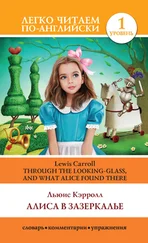Mira watches the third girl. She reminds Mira of Robin from The Little Kirov. This thin girl is not B Level — she’s C Level, marked by black leotards. She has Robin’s dark hair, heart-shaped elfin face, and bow-shaped lips. She has Robin’s untroubled translucent skin. But Robin’s thinness is an ethereal slightness, whereas this girl’s thinness is one of will: her collarbones and ribs stick out like bony fingers. Only her calves and ankles are substantial. There is something about this not-Robin that, despite — or maybe because of — her anorexia, makes her look older, almost like a lady, a grown-up.
Mr. B does not like anorectics. Thin is good, yes, but the anorectics end up getting sidelined and leave. Still, the line is fuzzy. A girl can be delicately thin and then, only a few pounds less, she can have the tell-tale gaunt rigidity of the anorectic. Anorectics are not reliable. They stick around for a while, all bone, no muscle, downy hair growing on their backs, until they can’t dance anymore. Then they disappear. Mira does not know where they go.
Not-Robin sits on the bench and pulls her leotard down so that you can see her pinprick nipples that barely rise from her ribs. She looks at Mira with some kind of raw emotion, and for a second Mira has to look away.
Mira looks down at her new Capezios, with their barely cracked toe box. She feels some wall coming down, that she is growing less complicated, some jewellike part of her beginning to shine again. Her mouth opens to say something.
Not-Robin turns to her locker, and when she turns back her face has changed. It is shut tight and strangely blurry. A closed window streaked with rain.
Then Mira comes crashing into her ridiculous childhood self — and she is humiliated at the sight of her. Here again is the girl who dreams about being a princess, who loves the prince above all else, who thought saying “Fuck you” would solve all her problems, who accosts a jester because he kisses the prince (as if most ballet boys didn’t prefer boys). She has to look down.
All at once, the other girls laugh.
The taller girl snorts and says, “I hate when they get boners! I hate when they get them and stick them in your back.”
“Oh yeah,” says the wispy girl. “Like when you’re partnering, like for pirouettes? They have to hold you around the waist and they get a boner and it’s sticking you in the back.”
How many times has Mira come to this moment? She sees herself in the wings watching the jester kiss Christopher, his head back and broken-looking, the fierceness rising in her. How many times has she been asked to hate that ridiculous girl? Still, she can’t. She can ridicule her, but she cannot hate her. She is like a younger sister, stupid, fresh, naïve, ridiculous, but hers— her sister. But she thinks now of that night in the terms Maurice has laid out for her: she fell. You fell wonderfully .
Everything will change — is changing. She will no longer be Mira, but “Bella”: someone new and better and braver.

In October, Mira and her dad move into Judy’s big apartment off Park Avenue. Park Avenue from Sixtieth Street to Eightieth Street is its own world, a twenty-block island of determined wealth and privilege that abruptly ends with a stretch on Madison of public institutions — a big red brick school tagged long ago as a bomb shelter and a bedraggled public park. On this island, things are as they’ve been for a long time, or at least everyone has agreed to pretend so. Mothers in heels, wall portraits of family members, maids in uniforms in the kitchens, dining rooms with sideboards of weekly polished silver. Kids leave this world only to walk a few blocks to their private schools or climb into their family’s Mercedes to drive to the Hamptons.
Brooklyn is an excuse for sitcoms, the Bronx shorthand for urban desolation and fear, but Park Avenue floats untouched, insulated. This is Judy’s world — and now her dad’s and hers.
Judy enrolls her in an all-girls private school. Mira walks a few blocks to her new school, tucked in a town house off Fifth Avenue, built of marble and wood, nodding at the doormen on her way, who stand in the dimly lit antechambers in stiff hats and brocaded lapels, protecting what is left of her innocence.
The difference between Brooklyn public school and Manhattan private school: everything . No cafeteria workers. No hot lunch. No Tater Tots. No bouncing baloney. In private school, kids buy —not bring — their lunch. Overpriced salads from the Madison Avenue deli. A steak sandwich from the deli two blocks away. Mineral water. At public school, no one got more than a dollar a week in allowance. Here, they get twenty-five dollars a week! “Recess” in a pebbled concrete yard is replaced by “gym” in a shiny wood-floored room of skylights and the squeak of sneakers and balls hitting the floor. In this shiny gym, she plays volleyball. The girls’ voices lower an octave and become hard and urge her on and if she hits the ball they thump her on the back and if she misses they turn away from her and clap their hands quickly to dismiss her failure. “Keep the energy up,” they say, clapping again.
In public school, the teachers are decades older and have pockmarked skin, circles under their eyes. Their eyes skate over her in relief whenever she is silent. In private school, shiny-haired young teachers call on her when she doesn’t speak enough. The other girls look at her expectantly as she tries in her new voice to get her ideas across. The ideas flow up as if from nowhere: she sees wind as a symbol in Wuthering Heights. She sees the Chinese Confucian system as an enviable moral code and in one paper compares foot binding to wearing pointe shoes. Her mother lets her go to this school because her father is paying for the tuition. But having gone to a private school herself, her mother warns her daughter of “the snobs, fruitcakes, and counterfeits” who are at these kinds of schools.
But the girls are nice to her for some reason, maybe because she is a bunhead, or maybe because she is Sam’s sister. Sam is popular for being a good lacrosse player. He goes to an all-boys private school — her school’s “brother school”—about ten blocks away.
Or maybe it’s because she tells these girls that she has a rich, old boyfriend who is going to marry her when she graduates high school. Maurice gives her money on Friday nights—“the babysitting money” she would be making if she were really babysitting. With this money, she buys jewelry from Bloomingdale’s that she tells them is from her boyfriend. They gather around and their makeup-less faces — no makeup is allowed — press in to see her latest acquisition. They believe her, or appear to.
After school, she climbs on the crosstown bus to SAB. It cuts through the park at Sixty-sixth Street and then travels west on Sixty-fifth. She gets out on the corner of Sixty-fifth and Amsterdam on the north side of Lincoln Center. The bus is often strangely empty. For some reason, not many people make the journey at this time of day from the East Side to the West Side.
Mira takes her place at the barre. She nods at the other girls whose names are called most regularly. They nod back curtly, sergeants who offer passing acknowledgment of the heavy responsibilities the others carry. And that is a bond of some sort — not friendship — but it is a bond.
The best girls — there are two of them besides Mira in this class — hold a careful alliance. Her two competitors are Felicia and Bryce. Felicia, in her Princess Leia buns, has the air of waiting. Bryce’s long limbs twitch as she warms up. They stand together along the far wall where the view of the mirror is most direct, and after class they gather in the hallway or dressing room to compare notes. Unlike at The Little Kirov, they do not envy each other, or not in the same way, not raw on the surface like children. They are already chosen — each of them — so they tolerate, they hate, one another as professionals.
Читать дальше












